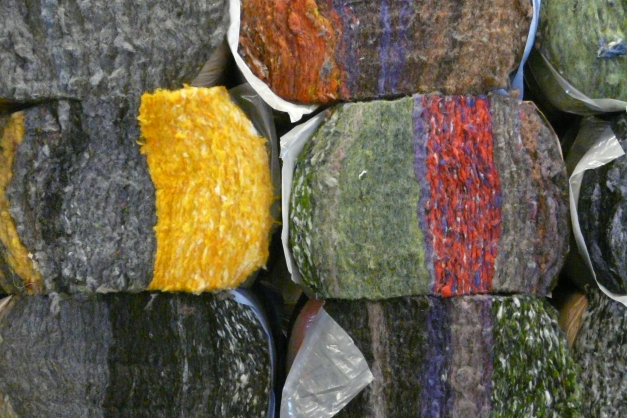Textile recycling
Past and present
The textile consumption is increasing approximately 4% on an annual basis. We are now using over 100 million tons of virgin textile fibers, each year! And so we are discarding mountains of textiles, year after year. Textile fibers which are produced from oil or grown with the help of enormous amounts of water, fertilizers, and crop-protection chemicals. It is clear that this unbridled growth has to stop in order to reduce the footprint of textiles.
The Amsterdam REFLOW pilot methods are developed and tested to reduce the amount of virgin textile materials used. A good example is the swapshop, which facilitates the exchange of clothes, or the repair vouchers given to the holders of the Amsterdam City pass (Stadspas). Or the development of reusable insulation gowns, which greatly reduces the amount of virgin materials used in hospitals and care centres. This contributes to the circular economy in textiles.
If textile products can not be re-used again, then they should be collected separately and not been discarded together with the municipal solid waste. There are many places where you can drop your discarded clothes (for textile collection points). The textile products collected separately will be sorted in specialised sorting centers. Clothes that can’t be reused, will be used in materials recycling. The result of this recycling are fibers which can be used again in a large range of textile applications.
Textiles were expensive goods. All the industrial waste was recycled, and clothes were reused over and over again. There was hardly any textile waste. It was a real circular textile economy until the 1960’s. At that time, textile industry left Western Europe and settled in Asia, attracted by the low wages of workers and the very liberal environmental laws.
Textile recycling is mainly based on mechanical force to turn clothes and fabrics back into fibers. The fibers resulting from mechanical recycling are mostly of a lower quality. They are used on a large scale as noise and thermal insulating materials, like underlayment for carpets, insulation in refrigerators and noise reduction in cars. They are also used in pressure distributors in seating and mattresses. With the rise of the circular economy in textiles, there is also much more attention to use the recycled fibers in clothes and other textile products. Good examples of textile products with a high percentage of recycled content are the jeans of Mud Jeans, the pullovers of Loop-a-life, and the products of Reblend. They all contain high amounts of mechanically recycled fibers.
Due to the increasing demand for high quality recycled fibers, much milder recycling processes have been developed. These recycling processes are using water to clean and/or decolorize the materials, but also to open the fabrics so the fibers can be extracted. As some fibers are stronger when wet, like cotton, this could be an interesting development. Those mechanically recycled fibers are produced in Belgium and are commercially available (in limited amounts) under the brand name PurFi.
In chemical recycling, the materials are broken down to smaller polymers or into the base materials. These processes are well controlled closed processes in which only a little amount of waste is produced. The smaller polymers and base materials can be repolymerized again into high quality textile fibers. The chemical recycling is under development for many types of fibers, like cotton (SaXcell, Renewcell) and polyester (Cure, Ioniqa). However, chemical recycled polyamide 6 (nylon) is already commercially available as Econyl, and fancy names like “textiles from the sea” or “ textiles from fishnets”. Also, in Tencel Refibra a part of the cellulose content is based on recycled textile materials.
Mechanical recycling (and especially the improved versions) and chemical recycling are complementary to each other. Mechanical recycling is cheaper and easier to perform and there is already a worldwide infrastructure for this type of recycling in place. Chemical recycling is mostly under development and will become commercially available on larger scale in the next 5-10 years. Chemical recycling has the advantage that it can use low quality input, but at a higher cost. The resulting fibers however have much better properties compared to mechanically recycled fibers.
It is believed that mechanical- and chemical recycling of discarded textile waste will be the key to the reduction of the (increase of) production and use of virgin fibers. These technologies will be able to kick-start the circular textiles economy.
But this can be done only, when discarded textiles are collected separately. You, as a consumer, are essential in the success of the circular textile economy by buying textile products with recycled content (like the brands mentioned in this blog post) and by dropping your discarded in a textile container. Little effort for a huge benefit for our planet!
